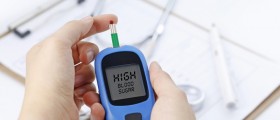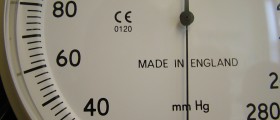
Diastolic blood pressure is the pressure of the blood on thearterial walls when the heart ends the contraction and relaxes. Systolic bloodpressure is measured when the heart contracts and pushes the blood into thearteries. For a healthy adult person normal blood pressure is 120/80mg Hg. 120represents the systolic blood pressure and 80 is diastolic pressure.
Diastolic pressure is always lower number than systolicblood pressure. Certain medical conditions are characterized by low diastolic bloodpressure, fewer than 60mg Hg, which is also called low blood pressure or hypotension.Hypotension can also be caused by low systolic blood pressure, when this valuecomes under 90mg Hg. Low diastolic blood pressure is the risk factor for the developmentof hardened arteries and cardiovascular diseases.
Symptoms
A patient experiencing low diastolic blood pressure isusually thirsty, his/her skin is cold and pale, he’s nauseous and breathe very shallowand fast. In most cases, these people feel dizziness, lightheadedness orfainting.
If the drop in diastolic pressure is small it might notcause any health problem, but if it become too low, it can affect the supply ofnutrients and oxygen and removal of the waste from the cells. If the condition lastsfor a long time the consequence might be cellular death.
What Causes Low Diastolic Blood Pressure
There are a few different reasons and conditions associated withlow diastolic blood pressure. Doctors will tell you that elderly normally havelower diastolic pressure than middle aged or young people. Low diastolic bloodpressure in older people might be caused by aging and stiffening of the aorta,but also by hypertension medications. Drugs these patients use to lower high systolicblood pressure affect the diastolic pressure as well.
Pregnant women could also experience this condition in themiddle of their pregnancy, around 24th week. In most cases, thiscondition in transient and their blood pressure comes back to normal after thechildbirth.
People that suffer from a nutritional deficiency, dehydration,serious infections and allergic reactions like anaphylaxis, can also experience low diastolic blood pressure. It has also been associated withpeople who lost plenty of blood, experience heart failure, slow heart rate orsome other heart problems. Pulmonary embolism may also lead to low diastolicblood pressure.
How to Treat This Condition
When there are no symptoms of low diastolic blood pressurethere is also no need for the treatment.
However, if your diastolic blood pressure is constantly low,you should consult your doctor. He/she will be able to properly assess thecondition and diagnose, if there is any, medical problem.

















Your thoughts on this
Loading...